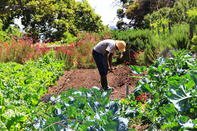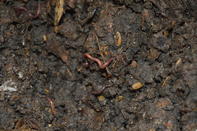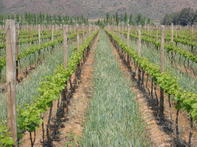
Minimum Tillage
Conservation or minimum tillage was introduced in the USA on quite a large scale around the 1970s and from there spread out to other countries, including South Africa.
With conventional tillage, the soil is either ploughed, disked or ripped, which disrupts the soil structure and over time leads to soil degradation and erosion. It also has a negative impact on the soil’s water holding capacity and is associated with the destruction of beneficial soil organisms. With conservation tillage, the soil is disturbed as little as possible.
During planting, specialised conservation tine or disk planters will merely scratch or cut the soil in a planting row to the required depth. Planting and fertilisation might also be done simultaneously.
To avoid erosion, serious conservation farmers will go a step further and use GPS technology to ensure all the equipment used during production, each year, always run on the same tracks in the land.
Zero or no-tillage is the most extreme form of minimum tillage, where just a narrow slot is made in the mulch layer in the soil where the seed and fertiliser are placed.

Cover Crops
Farmers in the past might have burnt the lands after the harvest to get rid of weeds. Conservation farmers do not burn their lands, but leave crop residue on the land, a practice referred to as stubble retention.
Stubble retention has various benefits. It may: Buffer wind and water erosion. Increase water infiltration and water holding capacity of the soil. Reduce evaporation. Increase organic matter in the soil. Protect soil organisms from extreme climatic conditions. Serve as habitat and food for beneficial organisms.

Crop Rotation
Instead of mono-cropping, where the same crop is planted year after year on the same piece of land, conservation farmers practice crop rotation.
They will evaluate the different crops that are suitable for production under their production environment and then rotate these crops with one another. In the Western Cape, for example, wheat, canola, barley, lupines, medics and lucerne are examples of crops that might be incorporated in the rotation system.
The key is not to plant an annual crop from the same family on the same land for more than two years. The rotation system does not have to be cut in stone, but should rather be seen as a management help.
Farmers can adapt it as needed, for example when a weed or disease problem arise. The goal of crop rotation is to break disease cycles associated with mono-cropping.
Specific organisms and disease are associated with specific crops, so if you only plant these crops it will result in a build-up of these organisms. By planting something else, these organisms will be stuck without a food source, which will result in their decline.
Crop rotation also allows farmers to use a wider variety of herbicides to keep weed problems in check, which in turn helps to prevent the development of herbicide resistance.
Grass herbicides, for example, cannot be used when wheat is planted as it will destroy the wheat. Farmers, however, can use these grass herbicides when broadleaf crops are planted.
The same applies to broadleaf herbicides. It cannot be used on broadleaf crops, but can be used during wheat production. When using herbicides always follow the instructions and rotate products with different active ingredients to prevent herbicide resistance.
By Glenneis Kriel